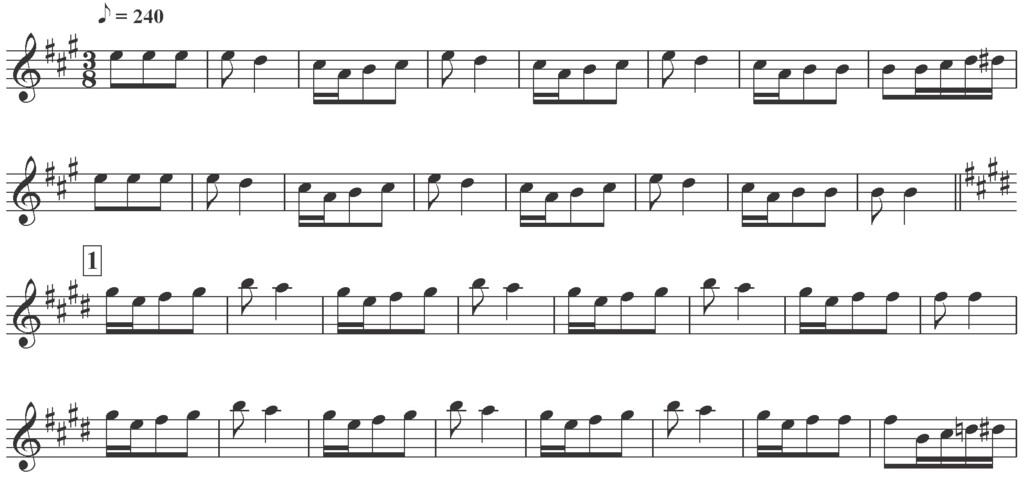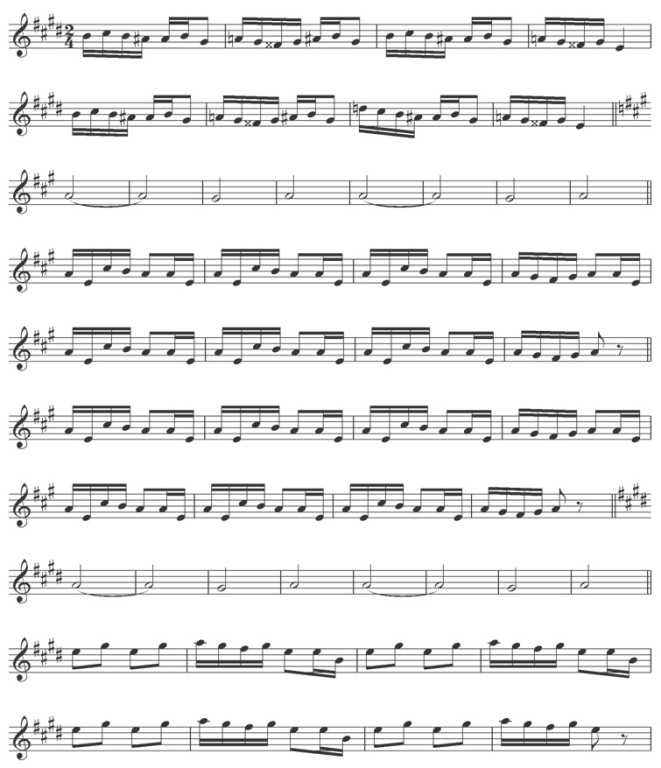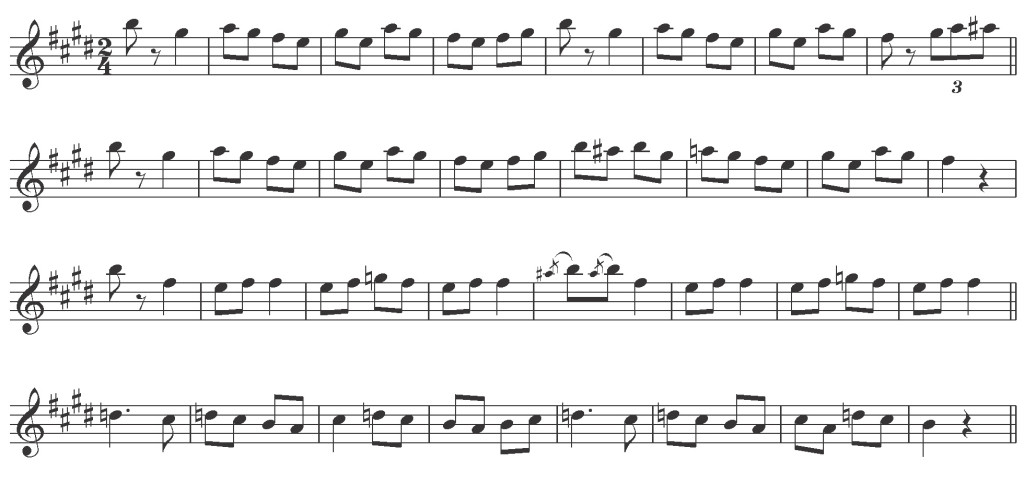Music notation for dances and songs in the vicinity of Leposavić
The melodies of songs in Leposavić and its surroundings are characterized by a very narrow melodic range, mostly based on three tones and in many elements similar to melodies played on the gusle. The singing style itself also greatly resembles gusle singing, with partially nasal articulation and specific cutting off of tones. Even the ornaments that appear in these songs are akin to those performed by gusle players.
These elements bring all these songs closer to lamentations. In a conversation with Aleksandar Pavlović, a student of ethnomusicology, who expressed interest in this area of Leposavić, we received a rough description of this singing style: 'They sing as if they are mourning, you can just hear a tearful voice, as if they are about to cry at any moment!'.
Singing is throaty, with a full voice and tense vocal cords which get relief precisely in the moments of the mentioned 'cutting off' of tones.
A type of songs that has still been preserved in some areas of the municipality of Leposavić are Slava songs, very specific for their uniform melodic pattern that repeats and over which different texts are sung. (This phenomenon of singing different texts to the same melody was also noted by Mokranjac in his study of the Priština region, where locals actually called the melody 'turlia'. In the area of Leposavić, we have not come across data whether there is a specific 'folk' expression.) Other songs recorded in these regions also show the same features as the customary songs.
Dances, or melodies for accompanying dances, kolo, are mostly based on a short motif that is repeated many times. The border position of Leposavić between Kosovo and Serbia has influenced the influx of certain elements from different Serbian regions, which is primarily reflected in instrumental melodies, kolo.
Music accompaniment was mostly performed on flutes, with occasional use of percussions, especially handmade ones. The gusle were intended for accompaniment to singing.
The following two examples represent recordings of folk melodies from the Leposavić area, in which the previously listed characteristics can be observed.
The first example is a Slava song with one of the possible text variants, which can still be heard at some Slavas in the villages.
The second is a lyrical, female song, followed by kolo, or melodies that accompany the dance.
Славска песма

Женска - лирска песма

Кукуњеш

Чикино коло

Чачак
